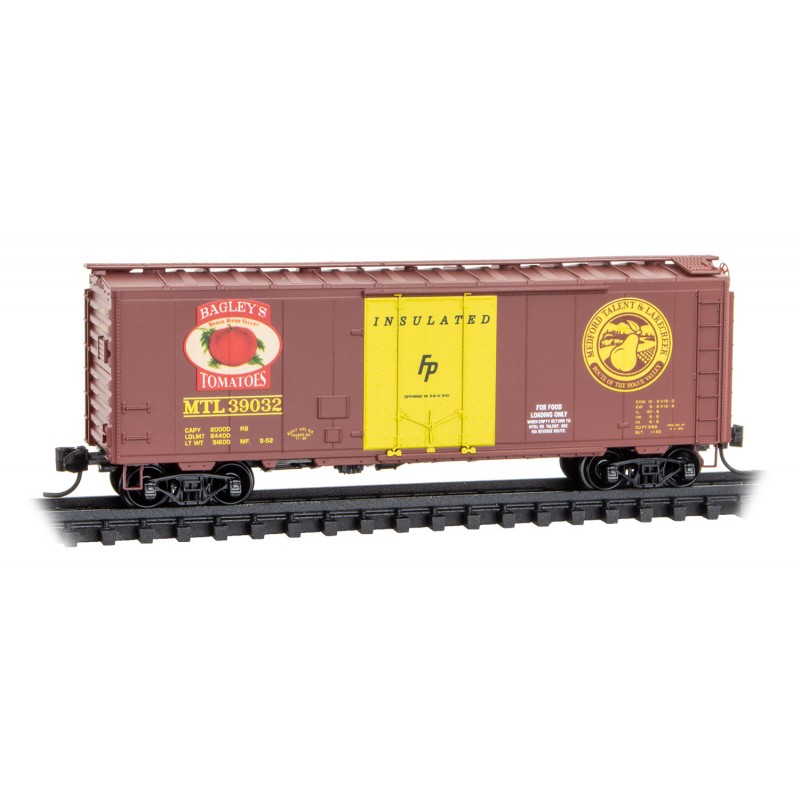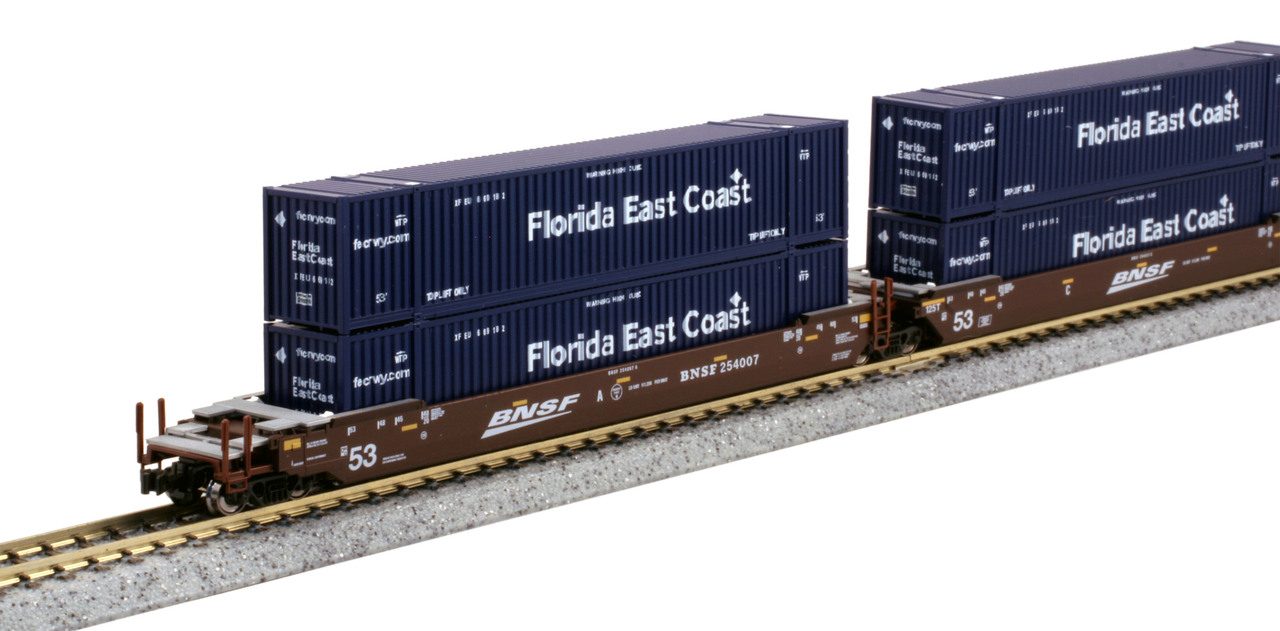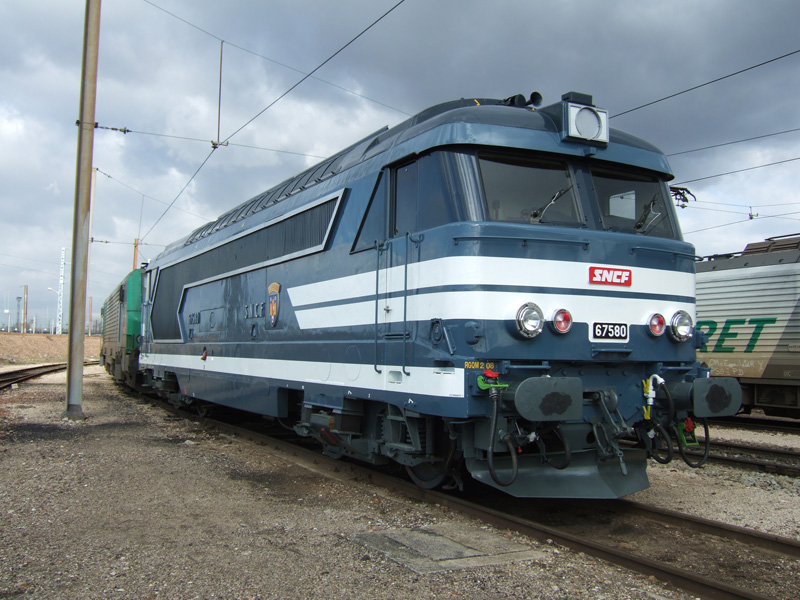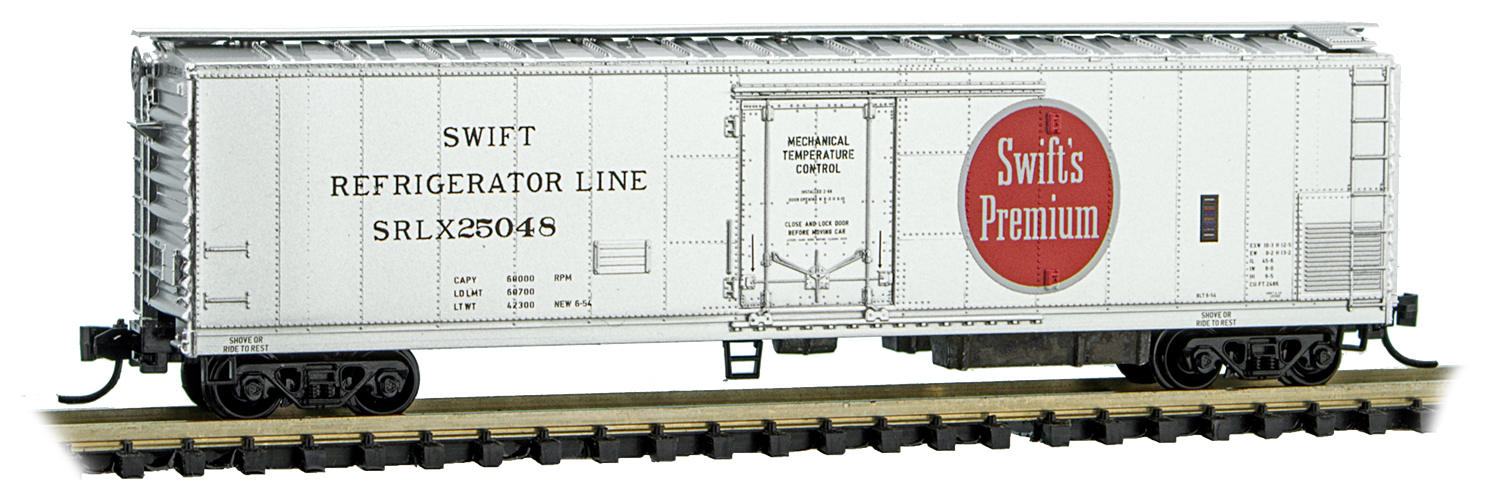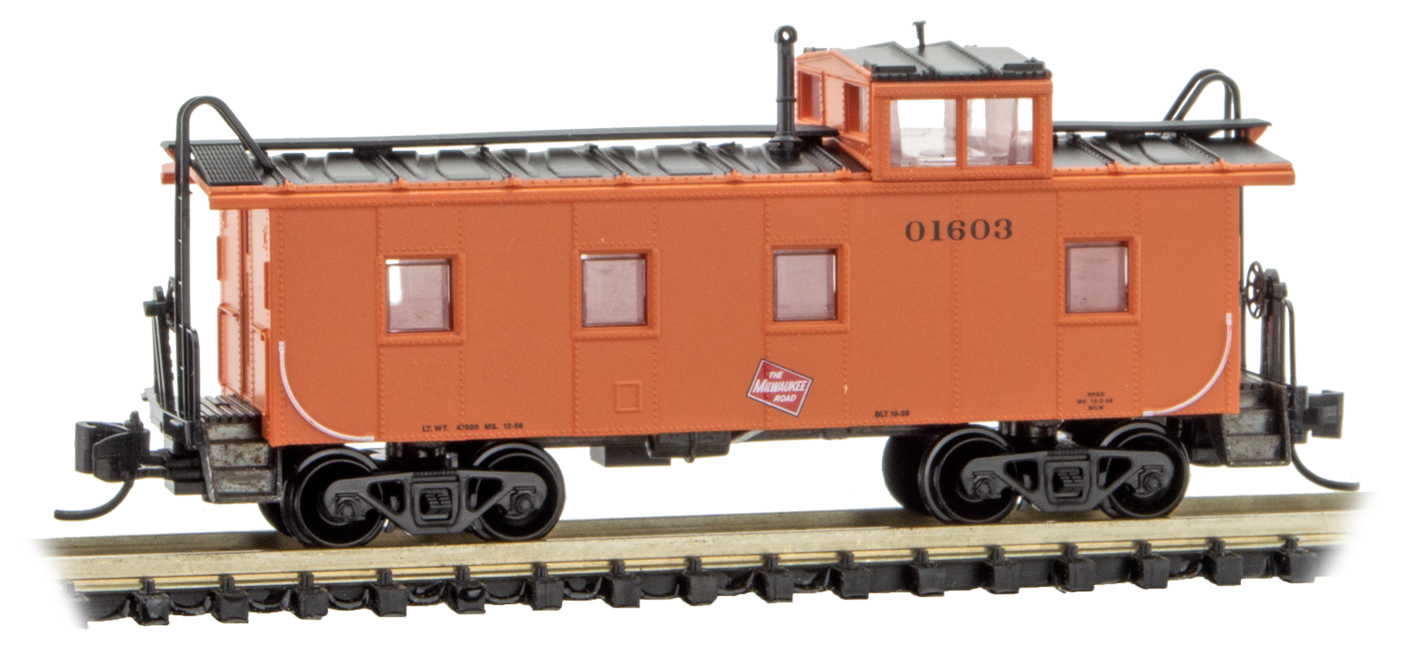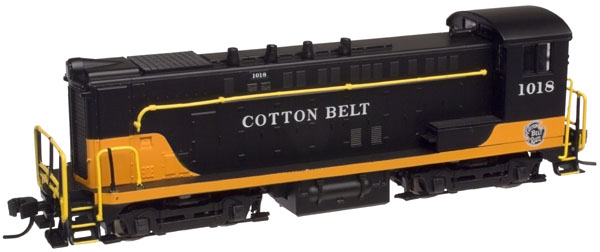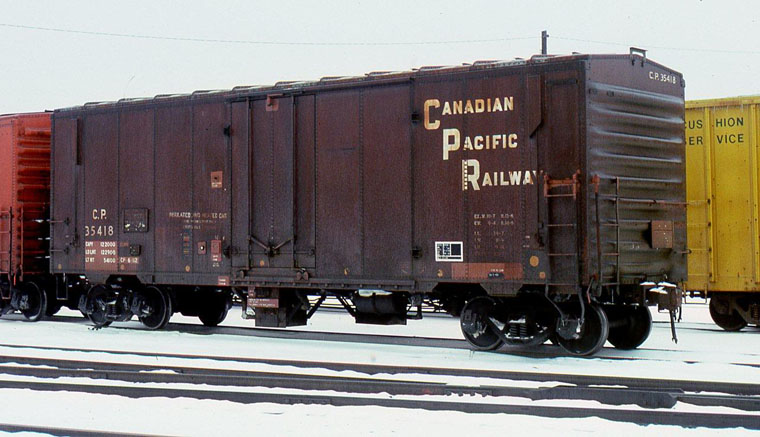Micro-Trains - 021 50 622 - Boxcar, 40 Foot, Steel Plug Door - Medford, Talent and Lake Creek - 39032
Click to see the details
market
Click to see the details
history
| Stock Number | 021 50 622 |
| Secondary Stock Number | 02150622 |
| Original Retail Price | $27.95 |
| Brand | Micro-Trains |
| Manufacturer | Micro-Trains Line |
| Body Style | Micro-Trains 021 Boxcar 40 Foot Steel Plug Door |
| Prototype Vehicle | Boxcar, 40 Foot, Steel Plug Door (Details) |
| Road or Company Name | Medford, Talent and Lake Creek (Details) |
| Reporting Marks | MTL |
| Road or Reporting Number | 39032 |
| Paint Color(s) | Brown with Yellow Door |
| Print Color(s) | Yellow, Red, White & Green |
| Paint Scheme | Bagley's Tomatoes |
| Additional Markings/Slogan | Insulated |
| Coupler Type | MT Magne-Matic Knuckle |
| Coupler Mount | Truck-Mount |
| Wheel Type | Injection Molded Plastic |
| Wheel Profile | Small Flange (Low Profile) |
| Announcement Date | 2021-01-01 |
| Release Date | 2023-01-15 |
| Item Category | Rolling Stock (Freight) |
| Model Type | Boxcar |
| Model Subtype | 40 Foot |
| Model Variety | Steel, Plug Door |
| Prototype Region | North America |
| Prototype Era | NA Era III: Transition (1939 - 1957) |
| Scale | 1/160 |
Specific Item Information:
MT&L Tomato Box Car - Rd# 39032 - Built by Medford, Talent & Lakecreek in 1950, this 40’ insulated plug-door car with Bettendorf trucks served various canneries around the Rogue Valley. The Medford, Talent & Lakecreek Railroad was established in 1918 to serve the communities throughout Oregon’s Rogue Valley, helping move commodities to the Southern Pacific interchanges. The success of the modest shortline revolved around serving various agricultural, timber, and manufacturing industries, as well as some passenger and tourist traffic in the region.
Prototype History:
Plug-Door boxcars are usually insulated and typically carry products such as canned goods that require protection from extremes of temperature but do not require refrigeration. Plug-style doors were normally used to ensure a tight seal in the insulation. Designed for transport of both perishables and large loads, plug doors allowed box cars to be sealed from outside dust and dirt. Cars like these were manufactured during the 50s and 60s.
Whether you consider this a reefer or a boxcar is a matter for angel-pinhead-counters. There seems to be a bit of a blurry line during the transition era between the idea of a steel ice reefer and an insulated boxcar. I guess an ice reefer was meant to hold ice for cooling but I doubt this is a cut-and-dry distinction. Modern "mechanical" reefers are a different breed as they contain a refrigeration unit which quite distinctly sets them apart from "boxcars".
Whether you consider this a reefer or a boxcar is a matter for angel-pinhead-counters. There seems to be a bit of a blurry line during the transition era between the idea of a steel ice reefer and an insulated boxcar. I guess an ice reefer was meant to hold ice for cooling but I doubt this is a cut-and-dry distinction. Modern "mechanical" reefers are a different breed as they contain a refrigeration unit which quite distinctly sets them apart from "boxcars".
Road Name History:
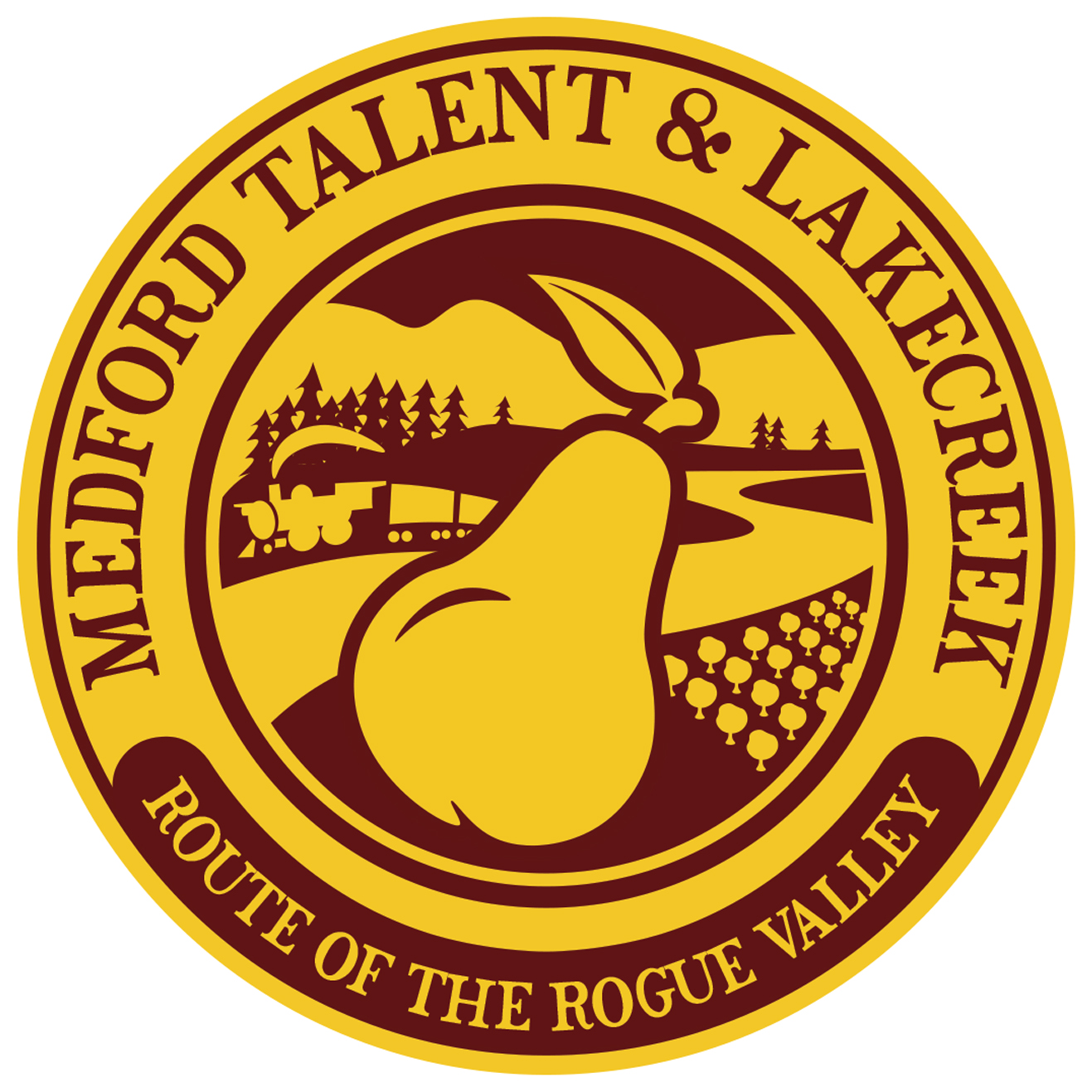 The Medford, Talent and Lake Creek Railroad was established in 1918 to help local Rogue Valley communities move commodities to the Southern Pacific interchanges. The success of the model shortline in the early days brought not only commercial interest,s but tourist traffic to the region. The lush agricultural landscape, moderate climate and natural wonders of the Rogue Valley proved a great draw and helped establish the MT&L RR as a healthy regional line in Southern Oregon by the mid 20th Century. While most of the traffic supported the local fisheries, growers and fruit processors, the timber brought down through Lake Creek from the western flanks of the surrounding Cascades insured success for the fledging rail line.
The Medford, Talent and Lake Creek Railroad was established in 1918 to help local Rogue Valley communities move commodities to the Southern Pacific interchanges. The success of the model shortline in the early days brought not only commercial interest,s but tourist traffic to the region. The lush agricultural landscape, moderate climate and natural wonders of the Rogue Valley proved a great draw and helped establish the MT&L RR as a healthy regional line in Southern Oregon by the mid 20th Century. While most of the traffic supported the local fisheries, growers and fruit processors, the timber brought down through Lake Creek from the western flanks of the surrounding Cascades insured success for the fledging rail line.
By 1927 the numbers doubled as did the daily traffic of coaches and private parlor cars through the windy passage along the banks of the Upper Rogue River. In 1929 track was completed to the coast following the Lower Rogue to Gold Beach which provided a necessarly link to small communities delivering commodities and mail. With the completion of the link, the Rogue Valley flourished as did the MT&L RR enabling both to survive the coming Depression and Beyond. Source: Micro-Trains Line

By 1927 the numbers doubled as did the daily traffic of coaches and private parlor cars through the windy passage along the banks of the Upper Rogue River. In 1929 track was completed to the coast following the Lower Rogue to Gold Beach which provided a necessarly link to small communities delivering commodities and mail. With the completion of the link, the Rogue Valley flourished as did the MT&L RR enabling both to survive the coming Depression and Beyond. Source: Micro-Trains Line
Brand/Importer Information:
Micro-Trains is the brand name used by both Kadee Quality Products and Micro-Trains Line. For a history of the relationship between the brand and the two companies, please consult our Micro-Trains Collector's Guide.
Manufacturer Information:
 Micro-Trains Line split off from Kadee Quality Products in 1990. Kadee Quality Products originally got involved in N-Scale by producing a scaled-down version of their successful HO Magne-Matic knuckle coupler system. This coupler was superior to the ubiquitous 'Rapido' style coupler due to two primary factors: superior realistic appearance and the ability to automatically uncouple when stopped over a magnet embedded in a section of track. The success of these couplers in N-Scale quickly translated to the production of trucks, wheels and in 1972 a release of ready-to-run box cars.
Micro-Trains Line split off from Kadee Quality Products in 1990. Kadee Quality Products originally got involved in N-Scale by producing a scaled-down version of their successful HO Magne-Matic knuckle coupler system. This coupler was superior to the ubiquitous 'Rapido' style coupler due to two primary factors: superior realistic appearance and the ability to automatically uncouple when stopped over a magnet embedded in a section of track. The success of these couplers in N-Scale quickly translated to the production of trucks, wheels and in 1972 a release of ready-to-run box cars.
Micro-Trains Line Co. split off from Kadee in 1990 to form a completely independent company. For this reason, products from this company can appear with labels from both enterprises. Due to the nature of production idiosyncrasies and various random factors, the rolling stock from Micro-Trains can have all sorts of interesting variations in both their packaging as well as the products themselves. When acquiring an MTL product it is very important to understand these important production variations that can greatly enhance (or decrease) the value of your purchase.
Please consult our Micro-Trains Collector's Guide

Micro-Trains Line Co. split off from Kadee in 1990 to form a completely independent company. For this reason, products from this company can appear with labels from both enterprises. Due to the nature of production idiosyncrasies and various random factors, the rolling stock from Micro-Trains can have all sorts of interesting variations in both their packaging as well as the products themselves. When acquiring an MTL product it is very important to understand these important production variations that can greatly enhance (or decrease) the value of your purchase.
Please consult our Micro-Trains Collector's Guide
Item created by: CNW400
on 2023-01-16 22:52:04
Last edited by: CNW400 on 2023-08-21 17:48:05
If you see errors or missing data in this entry, please feel free to log in and edit it. Anyone with a Gmail account can log in instantly.
Last edited by: CNW400 on 2023-08-21 17:48:05
If you see errors or missing data in this entry, please feel free to log in and edit it. Anyone with a Gmail account can log in instantly.


